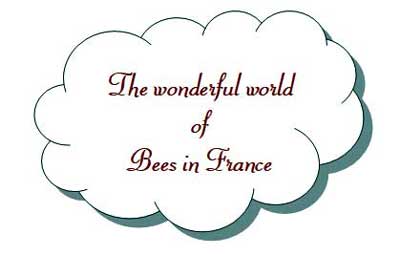Hawk or Sphinx moths in France, (Sphingidae).
In the UK the Sphingidae family of moths are commonly called Hawk moths and in France they all have the word Sphinx as part of their common name.
This simple list gives their names in English, Latin and French, the caterpillar food plant, annual generations and migratory status if any and a link to photos & distribution for each species.
Lime Hawk Moth, Mimas tiliae, Sphinx du Tilleul
Adults emerge May / June with an occasional 2nd generation in Autumn in hotter areas. Caterpillars feed principally on Lime, (Tilia), but occasionally Alder and Elm may be suitable, even Birch or Oak. Found in all parts of France. Hibernates as Pupae in the ground. External link
Poplar Hawk Moth Laothoe populi Sphinx du Peuplier
Likely to have 2 generations in the warmer zones of France from May to September. Caterpillars feed on Poplars and Aspen. Found in all parts of France. Hibernates as Pupae in the ground. External link
Pine Hawk Moth Hyloicus pinastri Sphinx Pinastri
Southern Pine Hawk Moth Sphinx maurorum Sphinx mauresque
These two species can be difficult to separate. Generally Hyloicus pinastri is found in the Northern half of the Country, part of the Massif and descending into the Alpes in the East. Sphinx maurorum effectively occupies the Southern half of France. Main caterpillar food plant is Pines and sometimes Cedars. 2 generations are possible from May to September. Hibernates as Pupae in the ground. External links: Sphinx Pinastri Sphinx mauresque
Eyed Hawk Moth Smerinthus ocellata Sphinx Demi-Paon
Two generations are possible from May to September. Huge range of trees are used by the caterpillar including fruit trees. Found in all parts of France. Hibernates as Pupae in the ground. External link
Privet Hawk Moth Sphinx ligustri Sphinx du Troène
Two generations are possible from May to September. Caterpillars use Privet and to a lesser extent Ash, Forsythia, Elder, and Lilac. Found in all parts of France. Hibernates as Pupae in the ground. External link
Convolvulus Hawk Moth Agrius convolvuli Sphinx du Liseron
The majority are of this species are arrivals from Africa between May and September with a small number that have over-wintered in the Mediterranean region of France. Caterpillars may be seen in other parts of France but are extremely unlikely to survive the winter as Pupa in the ground. Caterpillars feed on Convolvulus and Malows. External link
Death's-head Hawk Moth Acherontia atropos Sphinx Tête de Mort
The first migrants arrive from Africa in May & June. Caterpillars can be seen mainly in July and August anywhere in France although more so in the South. These produce a second generation of sterile moths that fly from August until October. Caterpillar food plants Solanum sp., Datura sp., Lycium barbarum, Nicotiana tabacum. Often found on potato plants. External link
Oleander Hawk Moth Daphnis nerii Sphinx du Laurier Rose
Migrants arrive from Africa in May to the South of France but their spread to other parts of France is dependent on temperature. In “heatwave” years they may be found in small numbers as far North as the Somme but this really is one here and there. Caterpillars are found on Oleander and also on Periwinkle, (Vinca Minor and Major). External link
Spurge Hawk Moth Hyles euphorbiae Sphinx de l’Euphorbe
This species has two generations and can be seen from May until October. The second generation over winter as pupa in the ground. Food plant for the caterpillars are various types of Euphorbia with Euphorbia cyparissia being favoured. Found in most of France, much more so in the south and on dunes and sandy soils. External link
Bedstraw Hawk Moth Hyles gallii Sphinx de la Garance
The adult flies in May-June and August-September. The second generation pupae hibernate. Theoretically everywhere in France but increasingly rare since the cultivation of Rubia tinctorum, the common madder or dyer's madder ceased. Otherwise Bedstraws and Willowherbs may be used especially Rosebay willowherb Epilobium angustifolium where present. External link
Silver-striped Hawk Moth Hippotion celerio Le Sphinx Phoenix
This species arrives from Africa quite late in the season, mostly from August to October, rarely in great numbers and principally in the South where the caterpillars feed on Bedstraws, Willow-herbs and Vines. External link
Striped Hawk Moth Hyles livornica Sphinx Livournien
First migrants arrive in France at the beginning of May to produce one or two generations depending on the local climate. It’s probable that there are some that have hibernated in France as Pupae and it is a species that is increasingly seen here although less so in the North. Caterpillar food plants are Bedstraws, Docks, Plantains and Vines. External link
Bat Hawk Moth Hyles vespertilio Sphinx Chauve-Souris
This tends to be an Alpine species found mainly from an altitude of around 1300 to 2000 meters in the South and South East of France. Adults fly from the end of May and the caterpillars feed on Alpine Willow-herb. External link
Seathorn Hawk Moth Hyles hippophaes Sphinx de l'Argousier
This moth is to be found in Basses and Hautes Alpes, Isère, Ardèche, Vaucluse, Bouches-du-Rhone and Rhone. It flies in one generation from late May to July where its preferred biotope is the exposed scree on the south of the Alpine foothills where the caterpillars feed on Seathorn. External link
Mediterranean Hawk Moth Hyles nicaea Sphinx Nicéa or Sphinx de l’Esule
In France confined to the Departements bordering the Mediterranean Sea this moth emerges either in the September of the same year the eggs are produced or they can hibernate as pupae and emerge the following year in June. The Pupae rests on the soil surface in a coarse cocoon. Caterpillar food plant is Euphorbia nicaeensis. External link
Elephant Hawk Moth Deilephila elpenor Grand Sphinx de la Vigne
For the most part the species flies in June, but a second generation can sometimes be observed where the climatic conditions are favourable usually in September should this occur but this is rare because normally the pupae must remain in the soil throughout the winter. Found in all of France the caterpillars feed on Bedstraws, Willowherbs, Fuchsia and Vines. External link
Small Elephant Hawk Moth Deilephila porcellus Petit Sphinx de la Vigne
Slightly smaller but more brightly-coloured than its cousin the Elephant Hawk-moth it shares a similar biology and life cycle. The caterpillars of both species are difficult to differentiate but the Small Elephant caterpillar lacks the horn or scolus on the rear end. External link
Broad-bordered Bee Hawk Moth Hemaris fuciformis Sphinx gaze or Sphinx du Chèvrefeuille
It flies from May to August, in 1 or 2 generations and is found in all regions of France. The caterpillar feeds on honeysuckle and forms a coarse cocoon on the surface of the soil, bringing together twigs and plant debris to transform it into a matte black chrysalis. 2nd generation caterpillars may not complete their cycle in the North of France. External link
Narrow-bordered Bee Hawk Moth Hemaris tityus Sphinx Bourdon
It flies in May-June, sometimes with a second generation in August and can be found in all regions of France. Caterpillar feeds on Scabiosa and Knautia species where they make a rudimentary cocoon under the leaves, just on the surface of the soil. The chrysalis, black mat, is extremely fragile and often dies during the winter. External link
Oak Hawk Moth Marumba quercus Sphinx du chêne vert
This species flies from mid-May to mid-July in the warm, dry woody biotopes of Quercus pubescens and Quercus ilex in the South of France, generally South of Bordeaux, in a single generation. Caterpillar will feed on most Quercus, (Oaks), and the pupae over winter in the soil. External link
Willowherb Hawk Moth Proserpinus proserpina Sphinx de l'épilobe or Sphinx de l'œnothère
This species flies from May until June and can be found in all regions of France in open environments but never in forests. Food plants are various types of Willowherb and Evening primrose. It over winters in the ground as a pupa External link
Hummingbird Hawk Moth Macroglossum stellatarum Moro Sphinx
This species is to be found in all of France where it has successive generations and can be commonly seen from May until October. In the South and South West of France it over winters in the adult state and can be seen on warm days as early as February. The more Northern and Eastern regions must wait for migrants from the South. Principle caterpillar food plants are Bedstraws and Madders. External link

